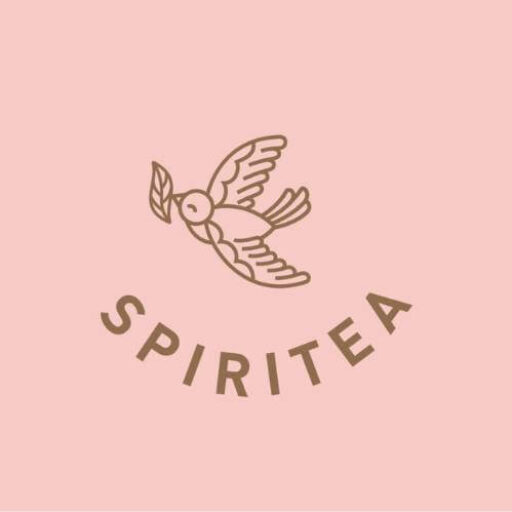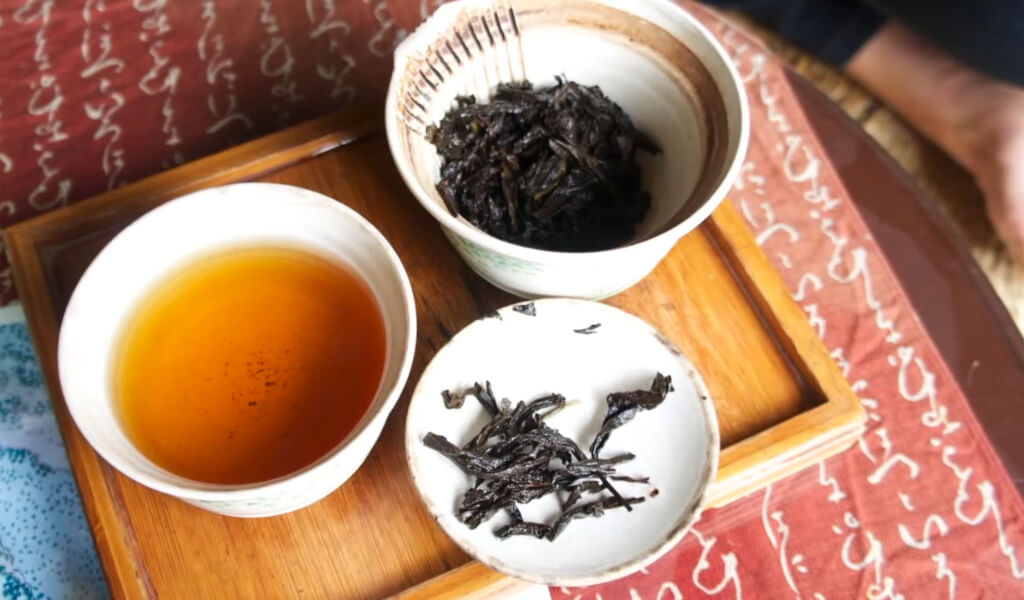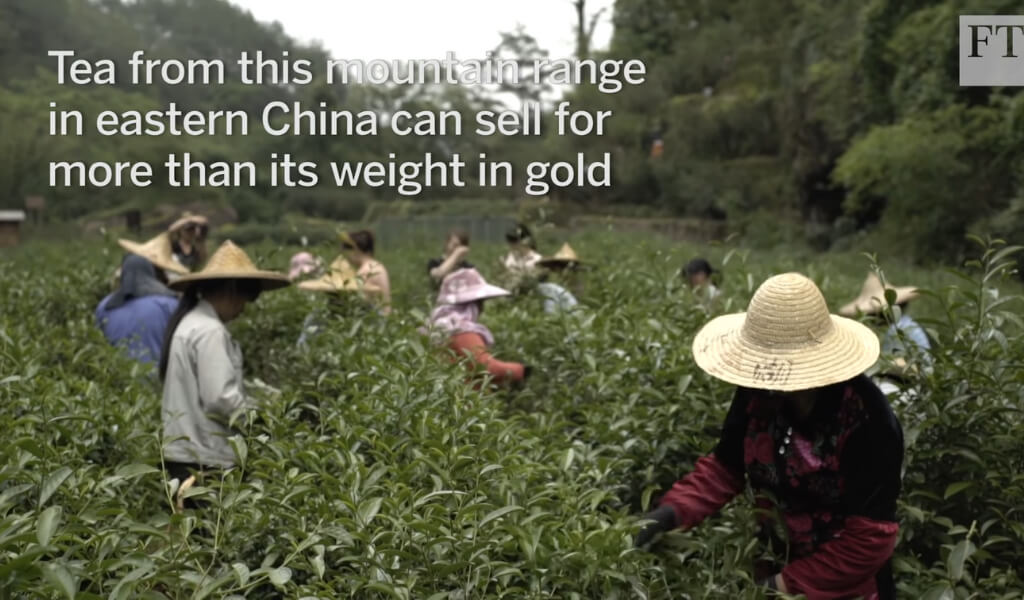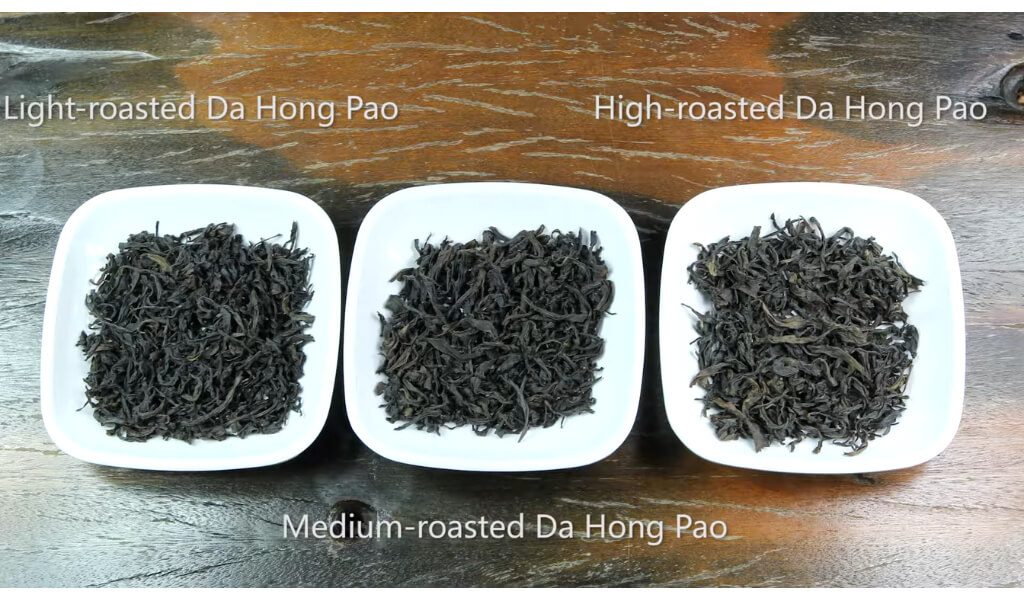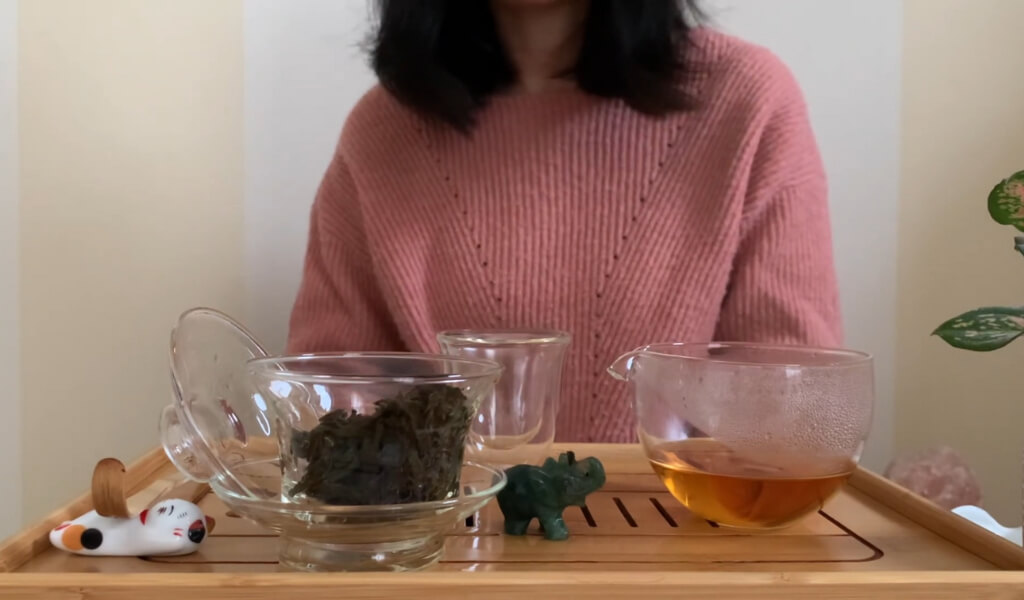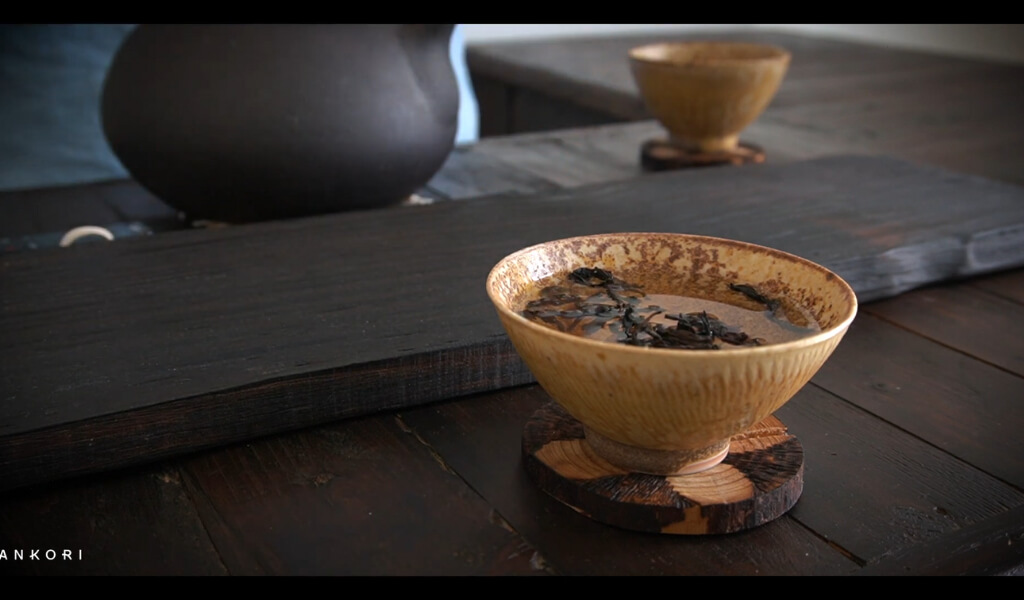I’m so excited to share this adventure with you as we plunge into the delightful universe of Da Hong Pao, also known as Big Red Robe tea. You and I will uncover this fascinating brew’s mysteries, including its rich history and varied types. We’ll also sample its unique flavor profile that has charmed tea connoisseurs worldwide.
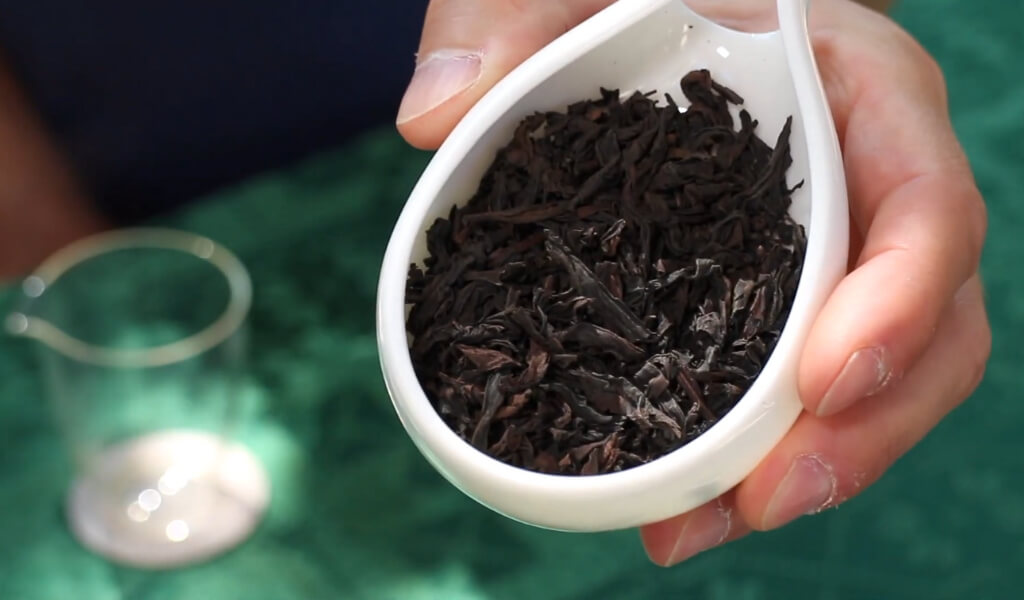
What is Da Hong Pao Tea?
Da Hong Pao, affectionately known as the ‘Big Red Robe,’ is a type of Oolong tea. Originating from the foggy and mineral-rich Wuyi Mountains in Fujian Province, China. Da Hong Pao is a partially oxidized tea, placing it somewhere between green tea, which is unoxidized, and black tea, which is fully oxidised.
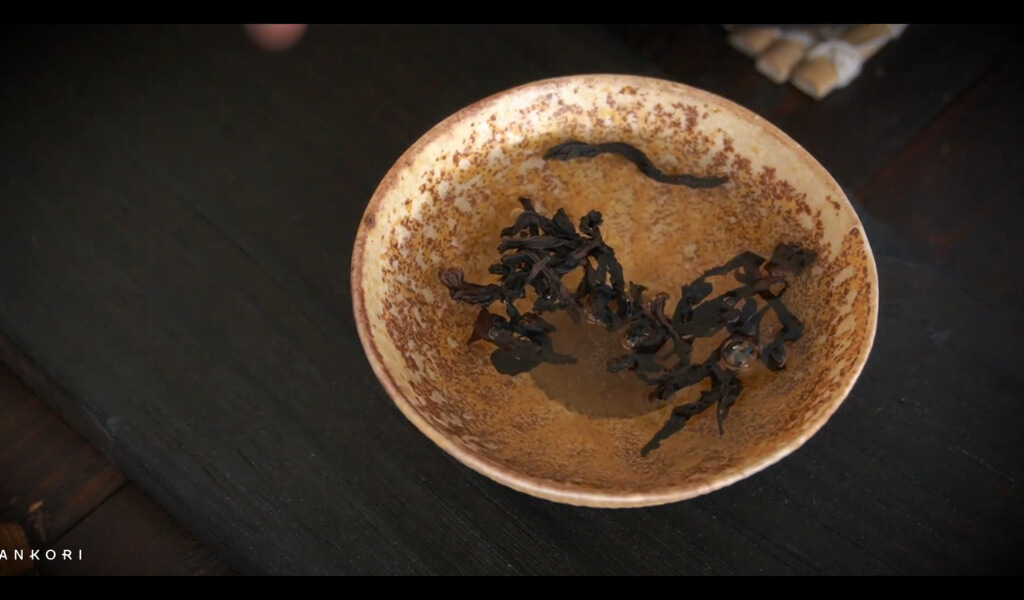
https://www.youtube.com/watch?v=tfcZ3Gr44xw
History of Da Hong Pao Tea
Let’s take a step back in time and explore the intriguing origins of Da Hong Pao.
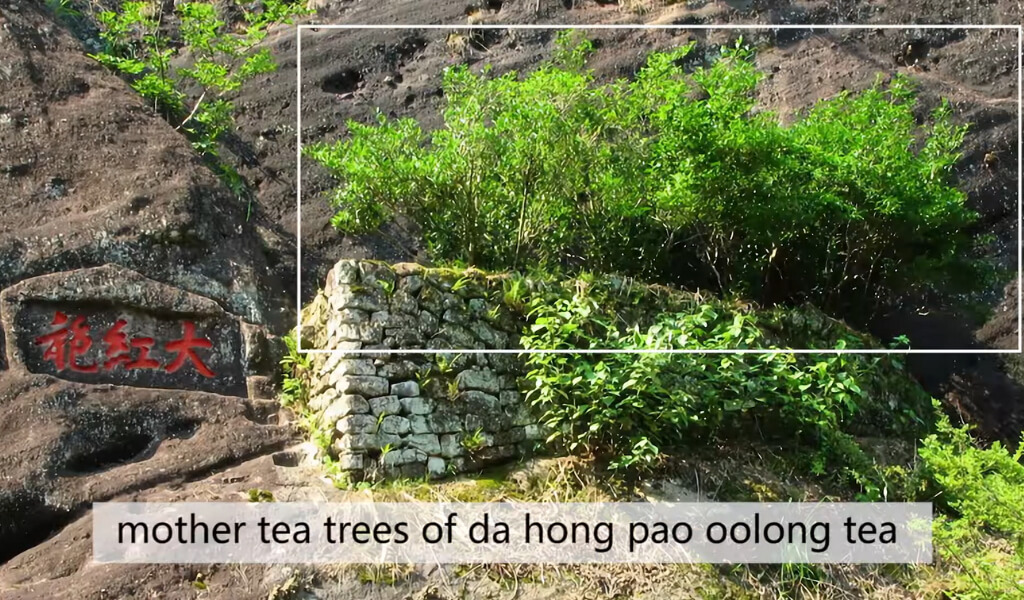
The earliest mention of this tea dates back to 1385 during the Hongwu reign in the Ming Dynasty. The story goes like this: Ding Xian, a scholar from the Ming Dynasty, was travelling through the Wuyi Mountains en route to Beijing for an examination when he suddenly fell sick. Luckily, he was treated with the local Wuyi Rock Tea and his health improved.
In gratitude, when Ding Xian aced his examination, he returned to the Wuyi Mountains to repay his kindness. But how could he show his appreciation? He removed his own “Big Red Robe” – hence Da Hong Pao – and wrapped it around the tea bushes that had provided his cure. He circled the bushes three times, a symbolic act that bestowed the tea with its now-famous name.
But the tale doesn’t end there. The history of Da Hong Pao is intricately tied to several regional temples and woven with countless legends and stories. Recently, it’s been linked with the Wanli Tea Road used by Shanxi merchants and the international tea trade.
It even entered the political sphere when China’s Chairman Mao Zedong gifted some Da Hong Pao to U.S. President Kissinger, prompting Premier Zhou to jokingly remark about giving away half the country!
Types of Bid Red Robe Tea
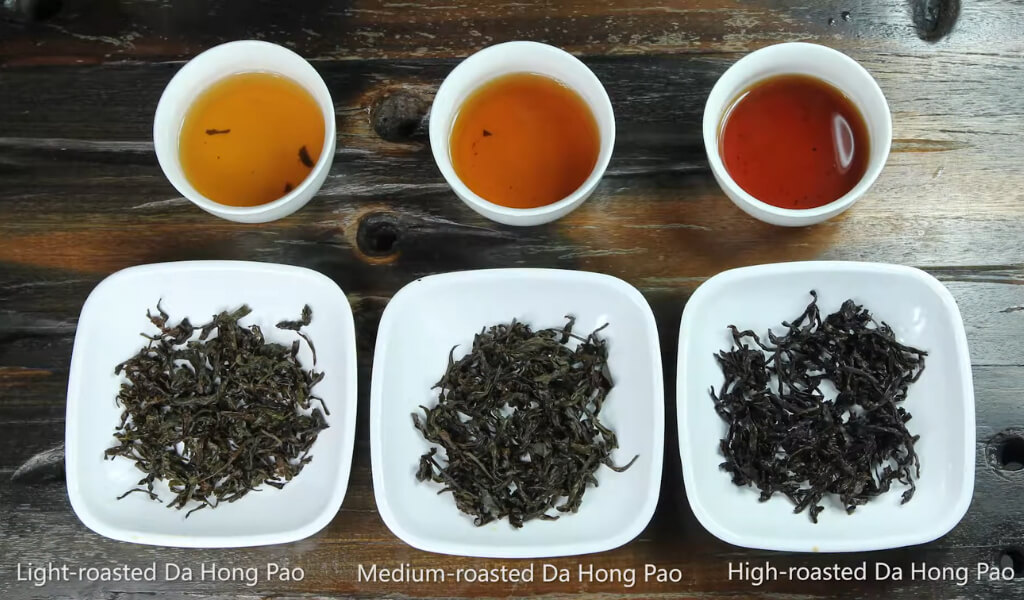
Now, let’s talk about the different Da Hong Pao tea varieties. Like many great things in life, this magical brew comes in different types, each with its unique charm.
| Type | Description |
| Mother Tree Da Hong Pao |
The rarest, most expensive Da Hong Pao tea, sourced from ancient bushes with roots dating to the Song Dynasty; extremely limited due to government restrictions.
|
| Purebred Da Hong Pao |
Cloned from the Mother Trees, these bushes produce high-quality tea and cover vast acreage. Recognized for their distinct appearance.
|
| Commodity Da Hong Pao |
A blend of Purebred Red Robe with other teas to meet high demand, combining tradition and innovation for wider availability.
|
Mother Tree Da Hong Pao
The crème de la crème of DaHongPao tea, the Mother Tree Da Hong Pao comes from the original bushes, of which only six remain today. Among these six, three have roots dating back to the Song Dynasty; talk about a sip of history!
Given their rarity, these bushes have produced the most precious and priciest tea on the planet. Imagine this – just 20 grams of this tea were auctioned off for a staggering 208,000 RMB, which equates to a little over $30,000 USD.
However, since 2006, the Chinese government decided to stop harvesting from these bushes to ensure their longevity. This decision means that the price of the remaining tea will only skyrocket, and the chance for most of us to taste this version of Da Hong Pao is next to none.
Purebred Da Hong Pao
The story began in the 1980s when scientists from the Fujian Academy of Agricultural Sciences embarked on an ambitious mission. They started taking cuttings from the Mother Trees to reproduce them asexually, and guess what? They succeeded!
These new bushes, often called ‘clones,’ are virtually identical to the original ones. Even after numerous generations, the tea taste from these bushes was judged by tea experts in 1988 to be on par with the tea from the mother trees. This achievement was a game changer, leading to a surge in the Big Red Robe tea production. Over 40,000 acres of land are devoted to cultivating these purebred bushes today.
So, what do these bushes look like? They’re more like shrubs that spread out to form a crown at the top. Their branches are thick, and their leaves boast a wide oval shape with a lustrous green colour.
Commodity Da Hong Pao
Even with the production of Purebred Da Hong Pao, the demand for this enchanting brew was soaring much higher than what these bushes could meet. That’s when the innovative minds at the Tea Research Institute of Wuyi Mountain decided to get creative.
Their solution? Blends. They began experimenting with mixing Purebred Red Robe with other Wuyi Rock Teas, such as Rou Gui and Shui Xian. The result was a unique blend that captured the spirit of Da Hong Pao and made it more accessible to tea lovers worldwide.
The Commodity Da Hong Pao combines tradition and innovation in tea cultivation. It showcases how popular demand, scientific research, and traditional tea blending techniques can come together to produce a tea that’s both high-quality and widely available.
This blend of facts and stories keeps tea enthusiasts and search engines like Google engaged in the rich tapestry of da-hong pao tea. Stay tuned as we continue our journey into the world of Da Hong Pao.
Read More:
- What is Tie Guan Yin Tea? Types, Benefits And Side Effects
- What To Know About Shui Xian Tea: Ultimate Guide For Newbies
- What is Dancong Tea? Ulttimate Guide: Flavor, Origin, Benefits And Side Effect
- What is Alishan tea? Here Are Common Types, Benefits, And Origin
Flavor Profile Of Wuyi DaHongPao tea
This heavily oxidized Oolong tea is like an exotic symphony of tastes and aromas you won’t find in most other Oolong varieties.
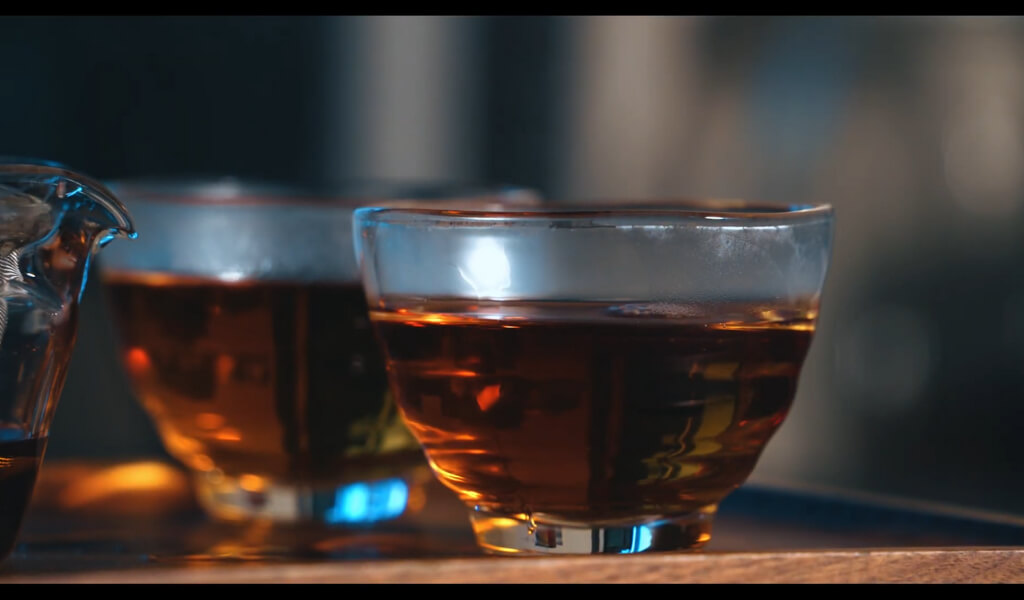
First, imagine a base of earthy and peaty notes, followed by stone fruit, brown sugar, and molasses whispers. Then, a woody aroma wafts in, gently infused with subtle hints of tobacco. On the palate, Da Hong Pao feels like velvet, smooth and luxurious, with a subtle aftertaste of sandalwood.
This unique combination of flavours in China is known as ‘Yan Yun.’ It’s a balanced, harmonious profile that blends many characteristics into one delightful brew. It boasts a clean, pure flavor with the freshness of blooming orchids, made possible through the careful and consistent roasting of each tea leaf during production.
After savouring Da Hong Pao Tea’s complex flavors, let’s discuss its wonderful benefits to our health.
Da Hong Pao Tea benefits
| Benefit | Description |
| Improved Digestion |
Contains antioxidants and caffeine to aid in efficient food processing.
|
| Weight Loss |
Increases metabolism and assists in fat burning, potentially aiding weight loss.
|
| Healthy Strong Heart |
May help lower bad cholesterol and reduce the risk of coronary heart disease.
|
| Mental Alertness |
Provides sustained alertness due to gradual caffeine release and L-theanine.
|
| Strengthening the Immune System |
Contains antioxidants that may fortify the immune system and combat diseases.
|
| Healthy Skin |
High in antioxidants, may help combat premature aging, dark spots, and wrinkles.
|
It’s potential to improve digestion.
Overeating or having slow digestion can sometimes lead to uncomfortable conditions like indigestion, bloating, and even constipation. It’s times like these when a warm, soothing cup of tea can feel like a hug for your tummy.
Enter Da Hong Pao tea. This comforting brew doesn’t just taste fantastic, but it’s also loaded with antioxidants and contains caffeine that can give your metabolism a gentle nudge, helping your stomach process food more efficiently and swiftly.
Da Hong Pao tea acts as a diligent stomach aide, aiding digestion for better nutrient absorption and waste elimination. Enjoy its great taste and health perks, making it a favorite among tea lovers and search engines. Stay tuned for more insights into Da Hong Pao tea.
Weight Loss
Regularly drinking this Oolong tea can be a fantastic supplement to your weight loss journey.
By increasing your metabolism rate, Da Hong Pao can help your body burn excess fat more efficiently. Picture this: you’re eating a balanced diet, and then add Da Hong Pao tea to the mix. It’s like assigning an extra helper to your stomach, assisting in processing fats and eliminating unwanted wastes.
But the perks don’t stop there. The caffeine present in Da Hong Pao also serves as a natural energy booster. This energy surge can motivate you to engage in regular physical exercise, helping you shape up faster.
Healthy Strong Heart
Regularly sipping this Oolong tea could be a gentle step towards a healthier heart, thanks to its polyphenols.
These powerful polyphenols are reputed to help lower bad cholesterol levels in your blood. By doing so, Da Hong Pao tea may assist in preventing the accumulation of plaque on arterial walls, thereby staving off coronary heart disease.
However, it’s important to remember that Da Hong Pao is a caffeinated tea. If you’ve had previous heart conditions, it’s always wise to consult your doctor before adding any new beverage to your routine.
That’s the beauty of Da Hong Pao tea – it offers potentially significant health benefits, but always with a nod towards individual wellness needs.
Mental Alertness
This Oolong tea carries moderate caffeine, which can be your secret weapon in staying alert and focused throughout your day.
Unlike the sudden jolt of energy, you might get from coffee, the caffeine in Da Hong Pao tea is released gradually into your bloodstream, providing a more sustained level of alertness. Think of it as a gentle, prolonged lift, rather than a quick, fleeting boost.
Furthermore, Da Hong Pao tea boasts L-theanine, an amino acid celebrated for its calming influence on the mind and nerves. This is the enchantment of tea, capable of both invigorating and soothing, creating a harmonious blend of revitalization and serenity.
Strengthening the Immune System
Another remarkable aspect of Da Hong Pao tea is its potential to fortify your immune system. Have you ever noticed how hot tea brings comfort when feeling under the weather? A single sip can make you feel better, and a cup or two can help restore balance. Sounds familiar?
This comforting ritual of drinking tea isn’t just about seeking solace. It’s also about equipping your body with essential minerals and vitamins to fight diseases.
Moreover, the antioxidants in Da Hong Pao tea could help bolster your immune system, fortifying your defenses against future illnesses caused by viruses or bacteria.
While more research is needed, tea may also contribute to preventing damage at the cellular level that can lead to cancer. These antioxidants assist your body in combating the free radicals that can spur tumor growth.
Healthy Skin
The benefits of Da Hong Pao tea extend to skincare too. The antioxidants in this Oolong tea are crucial in combating the effects of premature aging. Regularly drinking Da Hong Pao tea might help fade dark spots, smooth rough skin, and even diminish wrinkles.
Tea, particularly Oolong varieties like Da Hong Pao, is lauded for potentially reversing the ageing process.
This is primarily attributed to the high content of antioxidants, which are fighters against environmental stress and pollution that can take a toll on your skin.
White peony tea side effects
Just as every coin has two sides, Da Hong Pao tea, despite its many health benefits, can cause side effects if consumed excessively. These side effects are primarily due to caffeine content.
Consuming too much caffeine can cause problems like insomnia, anxiety, heart palpitations, dizziness, and stomach issues like vomiting or diarrhea. People sensitive to caffeine might also get itchy skin, hives, or rashes.
It’s important to be careful with da hong pao milk tea, especially if you’re pregnant or have conditions like kidney disease, heart problems, anxiety disorders, or stomach ulcers.
Therefore, while we appreciate Da Hong Pao tea’s myriad benefits, we must also practice mindful consumption to keep the experience enjoyable and beneficial.
With potential side effects considered, let’s delve into how much caffeine this unique tea contains.
Da Hong Pao Tea Caffeine Composition
This brew contains approximately 37 milligrams of caffeine for each 8-ounce serving – a sufficient kick to energise your mornings.
How to make Bid Red Robe Tea
Let’s learn how to brew this magnificent tea.
- First, let’s start by preheating your teapot and teacup or, if you opt for a more traditional experience, your gaiwan. Fill each vessel with hot water, gently swirl, and discard the water. This preheating step prepares your vessels for the tea brewing process.
- Next, place 1.5 teaspoons of Da Hong Pao loose-leaf tea in a tea strainer. This quantity is perfect for a single serving.
- Heat water to between 95 and 205 degrees Fahrenheit. This temperature range is perfect for bringing out the rich flavors of Da Hong Pao tea. Pour this hot water into your preheated gaiwan or teacup.
- Gently set the filter with the tea leaves into the hot water in the cup and let it steep for about 1 minute. Patience is key here. Good things, like a perfectly brewed cup of tea, take time!
- When your minute is up, remove the tea strainer. Now you can enjoy your freshly brewed Da Hong Pao tea!
But take your time to dispose of those tea leaves! Da Hong Pao can be re-infused anywhere from four to six times. Just add a minute of steeping time for each new infusion. This way, you’ll get the most out of your tea leaves and can savour the evolving flavors of Da Hong Pao tea.
Now that we know how to brew it let’s learn the best ways to store our Red Robe Tea.
How to Store Red Robe Tea
Keeping Da Hong Pao tea fresh and full of its unique aroma is crucial. If not stored properly, it can easily succumb to moisture, lose its vibrant colour and characteristic fragrance, and even change its colour to an unwelcome green.
But don’t worry, with the right storage methods, you can maintain the quality of your Da Hong Pao at home for an extended period. Traditional storage solutions like tin boxes and porcelain jars work well. But we’re here to share four innovative and effective methods to ensure your tea stays fresh and aromatic.
Here are some handy tips for storing your Da Hong Pao:
Tin Can Storage Method: A popular approach is using a market-available, tinplate double-cover tea container. The primary aspect to check before storing your tea is the seal of the tin can.
Ensuring it’s tightly sealed during storage will help maintain the quality of your Da Hong Pao. Consider portioning a small quantity of tea leaves into smaller jars for easy access and storing the rest in large jars with a secure seal.
Thermos Bottle Storage Method: Storing Da Hong Pao in a thermos bottle is novel, but it can yield excellent results. First, thoroughly clean the thermos bottle. Then, place your Da Hong Pao tea inside, minimizing the amount of air in the bottle.
An essential step is to secure the bottle mouth with a cork stopper. For an extra layer of protection, seal the edge of the plug with white wax and wrap it with adhesive tape.
Ceramic Jar Storage Method: A ceramic jar as a storage vessel can be highly effective. Begin by ensuring that the ceramic jar is thoroughly clean. Next, wrap your Da Hong Pao tea in kraft paper and place it in the jar along with a lime bag. Fill the remaining space with a cotton bag for additional protection.
Remember, the lime bag needs replacing every 1-2 months to maximise the moisture-absorbing properties of the lime, ensuring long-lasting preservation.
But be cautious, glass jars, porcelain jars, wooden boxes, or medicinal jars might not be the best choices for storing Da Hong Pao due to their transparency, lack of moisture-proofing, and fragility.
Low-Temperature Storage Method: Just as we use refrigerators to preserve perishables like fruits and vegetables, the same logic applies to tea. To store Da Hong Pao using this method, pack it in a sealed package and place it in the refrigerator.
Be mindful that refrigerators can contain moisture and distinctive odours, so proper packaging is critical to prevent the tea from becoming stale. Ideally, the temperature should be maintained around 5 degrees Celsius, allowing Da Hong Pao to be stored for over a year. However, consuming the tea within one or two months is best to preserve its taste and aroma.
Remember, Da Hong Pao tea leaves are incredibly absorbent, making them susceptible to absorbing external odors.
The aroma components of the tea leaves, a result of the tea’s processing, are relatively unstable and can naturally disperse or oxidize over time. Hence, attention to preservation is paramount.
Adding these preservation methods to your tea-care routine’ll boost the longevity of your Da Hong Pao tea, ensuring it remains fresh and aromatic while providing a useful, comprehensive guide for your readers.
Da hong pao tea where to buy
When it comes to sourcing Da Hong Pao Tea, several reputable options are available to tea enthusiasts like me.
You can explore local tea shops or speciality stores such as Teavana, David’s Tea, or Adagio Teas, which often carry a wide selection of high-quality teas, including Da Hong Pao.
If you prefer the convenience of online shopping, trusted online platforms like Amazon and reputable tea retailers such as TeaVivre, Yunnan Sourcing, or Harney & Sons offer a diverse range of Da Hong Pao Tea options.
Additionally, engaging with tea communities or forums, such as Steepster or Reddit’s r/tea, can provide valuable recommendations from fellow tea lovers on trusted sources for purchasing Da Hong Pao Tea.
So, whether you opt for the in-person experience or the convenience of online shopping, the perfect cup of Da Hong Pao Tea is within reach.
Choosing Your Perfect Da Hong Pao Tea
Selecting the right Da Hong Pao tea can be daunting, especially considering its history, variety, and flavours. But don’t worry; I’m here to guide you through the process.
| Consider the aroma |
Da Hong Pao tea is renowned for its unique and layered scent. The highest-quality variants often exude a rich fragrance that blends floral and fruity with a touch of earthiness. So, next time you select, remember to take a moment to appreciate the aroma. It’s a good indicator of the tea’s quality.
|
| Have a look at the leaves |
Good Da Hong Pao tea leaves are twisted and slightly curled, resembling a little dragon. They have a vibrant greenish-brown color and look shiny. If you notice any dullness or inconsistency in colour, the tea may be of poor quality.
|
| Consider the taste |
Authentic Da Hong Pao has a complex, layered flavor that is both fruity and woody, with a hint of orchid-like floral notes. Its aftertaste should linger, providing a sweet and mellow sensation. This rich, robust flavor profile is what sets Da Hong Pao apart.
|
| Pay attention to the packaging |
Good Da Hong Pao tea is generally sold in air-tight and light-proof packaging to preserve its freshness and prevent oxidation. Ensure that the package seal is intact before you buy it.
|
Knowledge is power, especially when it comes to tea. Knowing what to look for can make all the difference in your tea-drinking experience. Happy brewing!
Conclusion
I hope you’ve found this Da Hong Pao Tea exploration as fascinating and enriching as I have. It’s incredible how much depth and history can be contained in a simple cup of tea.
I encourage you to experience the richness of this prized oolong tea for yourself and immerse in its delightful and complex flavour journey. As we say goodbye, I’m grateful for joining me in this tea exploration.
If you enjoyed reading this article as much as I loved writing it, please feel free to share it with fellow tea enthusiasts. Remember, sharing is caring. Cheers to a heart-warming cup of Da Hong Pao Tea!
Thanks for Spiritea Drinks
FAQs
What is Da Hong Pao tea made of?
Da Hong Pao tea is made from the tea plant Camellia sinensis leaves. This unique type of oolong tea originates from the Wuyi Mountains in the Fujian province of China, renowned for their mineral-rich soil that imparts a distinct flavor to the tea.
Is Da Hong Pao the most expensive tea?
Yes, Da Hong Pao is one of the most expensive teas in the world. The price is often attributed to its rarity, historical significance, and the complex process of producing this high-quality oolong tea.
Why is Da Hong Pao tea so expensive?
Da Hong Pao tea is expensive due to its rarity, rich history, and the meticulous production process. The original tea plants are nearly extinct, and the limited quantity available makes this oolong tea highly sought after, contributing to its high cost.
Is Da Hong Pao bitter?
No, Da Hong Pao is not typically bitter. It has a complex flavor profile includes notes of fruit, wood, and sweet floral undertones. Any perceived bitterness can often be attributed to over-steeping the tea.
Is Bid Red Robe Tea sweet?
Bid Red Robe Tea has a naturally sweet undertone, often compared to dark sugar or molasses sweetness. It’s part of its complex flavor profile, including woody and fruity notes.
Does Da Hong Pao tea taste good?
Absolutely! Da Hong Pao tea is renowned for its unique, complex flavor profile that perfectly balances sweet, fruity, and woody notes. Its rich, velvety body and lingering aftertaste make it a favourite among tea connoisseurs.
What else is Da Hong Pao called?
Da Hong Pao is also called Big Red Robe, Rock Tea, or Cliff Tea. These names reflect its vibrant colour, origin in the Rocky Wuyi Mountains, and the traditional growing methods used.
What is the difference between Tie Guan Yin and Da Hong Pao?
Tie Guan Yin and Da Hong Pao are both types of oolong tea, but they differ in flavour profiles and places of origin. Tie Guan Yin, also known as Iron Goddess of Mercy, typically has a lighter, more floral taste and is from Anxi in Fujian province.
Is Da Hong Pao green tea?
No, Da Hong Pao is not green tea. It’s a type of oolong tea, which is semi-oxidized. Green tea is minimally oxidised, while black tea is fully oxidized. Oolong tea, including Da Hong Pao, falls between these two categories.
I’m Shanna, creator of Spiritea Drinks. I’m all about teaching people to grow their own food, tea, cook what they harvest, and eat with the seasons.
